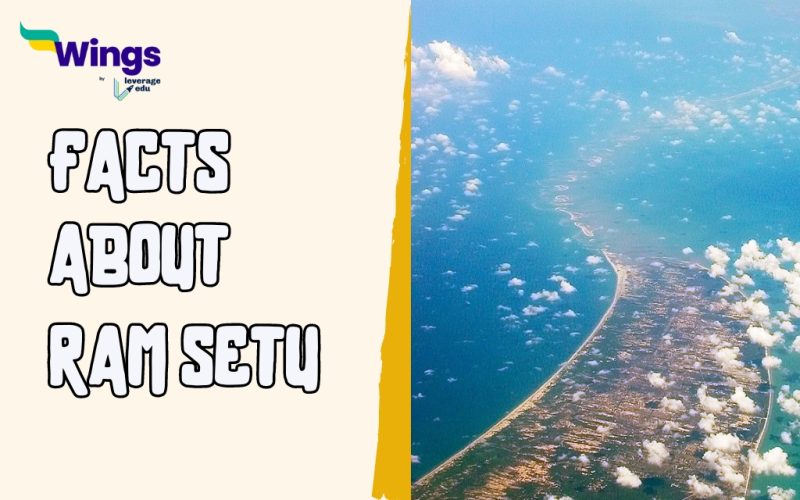Ram Setu, an ancient bridge between India and Sri Lanka has been a mystery for centuries. While it holds religious and cultural significance for the people of India, researchers and scientists have contrasting opinions. Numerous debates have been going on about whether the bridge dates back to Ramayana and was made by Rama’s army or is a naturally occurring phenomenon. Here are a few interesting facts about Ram Setu you must know to solve the puzzle.
Interesting Facts About Ram Setu
- The total length of the bridge is about 50 km.
- It separates the Gulf of Mannar from the Palk Strait.
- The bridge was visible until 1964. Currently, it is submerged in water at 10 meters in depth and 100 meters in width.
- Ram Setu is also known as Adam’s Bridge. It is believed that the name comes from ancient Islamic texts referring to Adam’s Peak in Sri Lanka. According to popular beliefs, this is the region where biblical Adam first appeared on the planet after being banished from the Garden of Eden.
- It is also known as Nala Setu. Hindu mythology states that Nala Setu was the architect of this prominent bridge in Ramayana.
- It is a chain of limestone shoals between Pamban Island, also known as Rameswaram Island, Tamil Nadu, India, and the Mannar Island in Sri Lanka.
- The shoals of Ram Setu are sedimentary rocks, created from the gradual accumulation of calcium carbonate.
- Scientists and researchers state that Ram Setu rocks are actually floating volcano stones. These stones have air trapped inside silica, making them light. A similar phenomenon is observed when ice floats on water.
- Hindu mythology suggests that Lord Rama’s army of monkeys built Ram Setu to rescue Goddess Sita, his wife, from the demon king Ravana.
- Some geologists suggest that Ram Setu might have been naturally formed due to the deposits of sand and limestone.
- The Geological Survey of India suggests that the Ram Setu Bridge was formed about 500 – 600 years ago.
- Surprisingly, the carbon dating of beaches located around Dhanushkodi and Mannar Island is in sync with the date of Ramayana.
- It is possible that the bridge was submerged underwater about 4,000 years ago due to rising sea levels.
- The Save Ram Setu campaign was launched on 27 March 2007. The primary aim of this campaign was to revolt against the Setusamudram Canal Project, which could lead to disastrous effects on marine life and the environment.
- In 2021, the Central Advisory Board on Archaeology approved the proposal to explore the origins of Ram Setu.
- The Ram Setu bridge is visible from Dhanushkodi, a town located in the Indian state of Tamil Nadu.
- According to the Marine and Water Resources Group of the Space Applications Centre (SAC), the Ram Setu bridge consists of about 103 small patch reefs.
- Although the bridge is submerged in water, it is difficult for ships and boats to navigate due to shallow water levels and varying depths.
Hope you had fun reading these interesting facts about Ram Setu. If you like reading about facts, you can visit our interesting facts page to read more such blogs.
 One app for all your study abroad needs
One app for all your study abroad needs















 45,000+ students trusted us with their dreams. Take the first step today!
45,000+ students trusted us with their dreams. Take the first step today!
